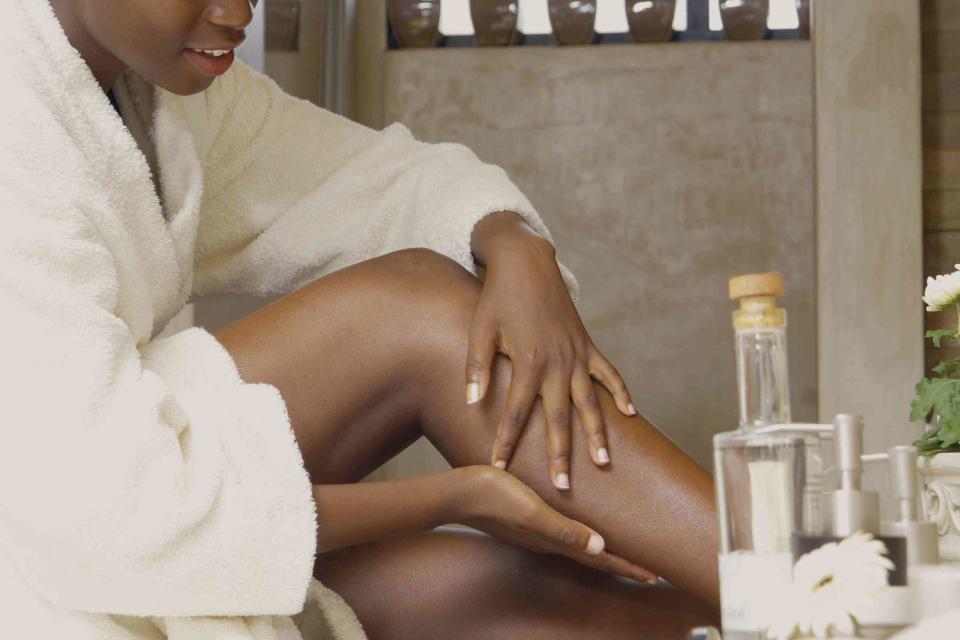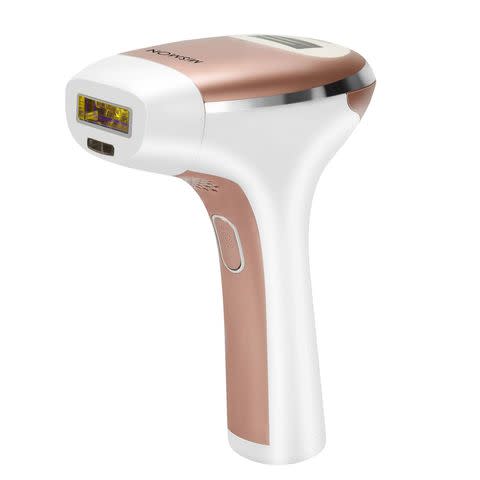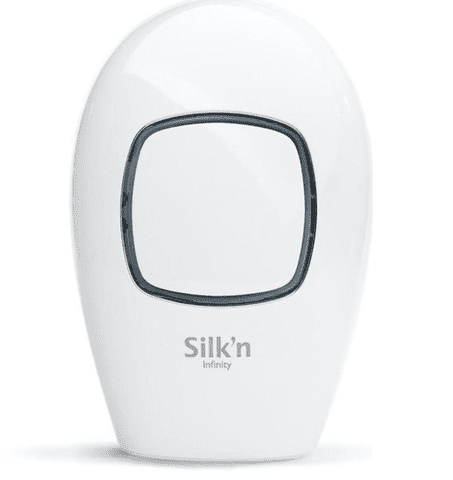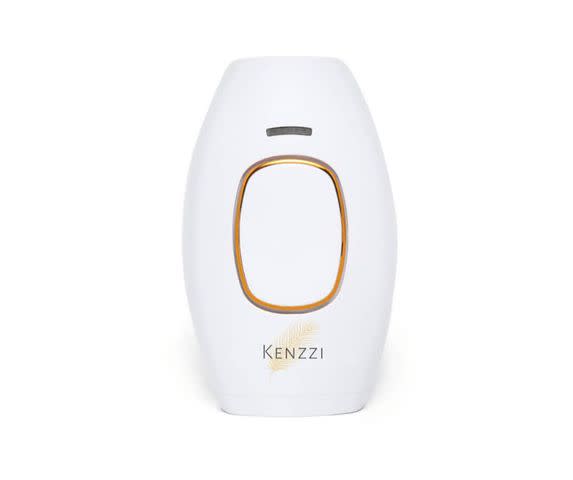Is At-Home Laser Hair Removal Safe? Here's What Experts Have to Say
Dotdash Meredith and Yahoo Inc. may earn commission or revenue on some items through the links below.
Experts break down how to use the devices safely.

Getty Images
Shaving is tiresome, waxing is painful, and laser hair removal is expensive. So it makes that at-home laser hair removal—a method that promises painless, permanent, and affordable hair removal results—is gaining more buzz.
But for a treatment that typically requires an esthetician’s supervision (and thousands of dollars worth of in-office sessions), is it safe to do at home? We tapped Hadley King, MD, board-certified dermatologist, and Adriana Perez-Nakamura, licensed esthetician, founder of Skincare By Adriana to investigate.
What is laser hair removal?
Unlike waxing, which uproots hairs from deep in the follicle, the laser hair removal process targets the dark pigment in your hair follicles, damaging it enough to stunt future growth.
“Laser hair removal treatments emit light of a wavelength that is absorbed by melanin in the root of the hair,” says King. “The light energy is converted to heat, which permanently damages and destroys hair follicles.”
In order to achieve the best results, you’ll want to use the treatment at the first stage of hair growth. “There are three stages of hair growth: anagen (growing phase), catagen (transition phase), and telogen (resting phase),” says Perez-Nakamura. “In order for the laser to be effective, you have to target hair while it’s in the anagen phase. The hair you want to remove will be in each of these phases at different times, so you’re going to need several treatments before you notice results.”
At-Home Laser Hair Removal Vs. In-Office Treatments
According to Perez-Nakamura, at-home handheld laser-hair removal devices are typically marketed as laser devices when they are usually actually IPL. “IPL stands for 'intense pulsed light' and uses light pulses to target melanin in the hair follicle," she says.
While IPL works on the same principles as lasers in that light energy is converted to heat energy (which causes damage to the specific target area), it's very different in that it delivers many wavelengths (or colors) in each pulse of light instead of just one wavelength. Professional laser treatment is a more selective process, and therefore the very high energy will focus on the hair follicle rather than surrounding skin.
In other words, IPL treatments are typically weaker and require more treatments than your standard in-office procedure. “At-home devices use lower energy settings so that they are safe to use on your own,” says Dr. King. “For in-office laser treatments, you should expect 5 to 7 sessions, spaced at least 4 weeks apart. After that, you should get a maintenance treatment once or twice a year. When using at-home laser treatments, more treatments will be necessary because the energy from your at-home device uses a lower energy.”
Also, keep in mind that while long-lasting, at-home laser hair removal treatments aren’t considered to be permanent. “The results can last anywhere from a few months to a few years,” says Perez-Nakamura. “You will likely need additional treatments later on to maintain your results.”
Is at-home laser hair removal safe?
Short answer: yes. “At-home laser hair removal is typically safe as long—if you follow directions and use caution to avoid burning,” says Dr. King. However, it’s also important to note that at-home laser hair removal isn’t for everyone.
According to Dr. King, those with a darker complexion have an increased chance of blistering and burning. “Because these devices target melanin (the pigment in our skin and hair), the best candidates for at-home laser hair removal will be those with light skin and dark hair,” she says. “That's the ideal set up so that the device can target the hair without damaging the skin. Darker skin will increase the risk of burning, and lighter hair can decrease the effectiveness.”
Additionally, Perez-Nakamura says there are certain factors that mean you shouldn’t do laser hair removal at all, i.e. if you’re on certain medications (consult with your doctor first), pregnant, or using retinoids or on Accutane.
Since professional laser hair removal devices have more settings, they’re usually more customizable to fit an individual’s skin type. And while experts at an office will ask all the right questions and take precautionary measures to make sure there are no adverse effects (for example, professional laser treatments can be adjusted to work with darker skin tones), you're more at risk if you do it yourself. That’s why in-office treatments are preferable, but if you choose to do it at home, it’s always best to speak with a medical professional to make sure you’re using the right device for you.
Best At-Home Laser Hair Removal Devices
If you’re looking to cut corners (and costs) for hair removal, here are the best laser hair removal devices that you can use at home.
RoseSkinCo. OG IPL Hair Removal Handset

Designed to promote long term hair removal with a 45-minute session once per week, this handheld IPL hair removal device can be used on any part of the body, including the face and bikini area.
MiSMON IPL At-Home Hair Removal Machine

This clinically-tested hair removal device is a bit stronger than most; in fact, it’s been shown to produce a visible reduction in hair growth after 7 to 9 sessions.
Silk’n Infinity At-Home Laser Hair Removal System

Designed with a lifetime of pulses, you never have to worry about replacing cartridges with this at-home laser hair removal device. Big bonus: It has five customizable settings to find a power that works best for your skin.
Nood The Flasher 2.0

Nood’s FDA-approved laser hair removal device has a convenient size that can target a lot of parts on the body. The 10-minute treatments make it easy to upkeep, and the UV-filtered lens blocks harmful ultraviolet light, keeping your skin safe while you flash away unwanted hair.
Kenzzi IPL Hair Removal Handset

This effective IPL device comes with 5 intensity modes so you can pick the safest level for you. The brand says it can also be used to reduce the appearance of vascular lesions, including spider telangiectasia, broken facial veins, and rosacea.
For more Real Simple news, make sure to sign up for our newsletter!
Read the original article on Real Simple.

